Here’s everything about charging your phone during a thunderstorm being safe:
In the vast majority of cases, you can charge a phone during a thunderstorm, and everything will be just fine.
That said, any expert in the fields of electricity, telecommunications, and construction is likely to tell you that there is still a chance your phone could be damaged.
The general recommendation is to unplug.
So if you want to learn all about how to safely use your phone during a thunderstorm, then you’re in the right place.
Keep reading!
- Why Does My Charger Keep Going On and Off? 6 Troubleshooting Tips
- Phone Charger Gets Wet: What to Do?
- Wireless Phone Charging Destroys Credit Cards: True?
- Charging Phone With Laptop Charger: Safe?

What Is Protecting Your Phone From a Lightning Strike? (3 Features)
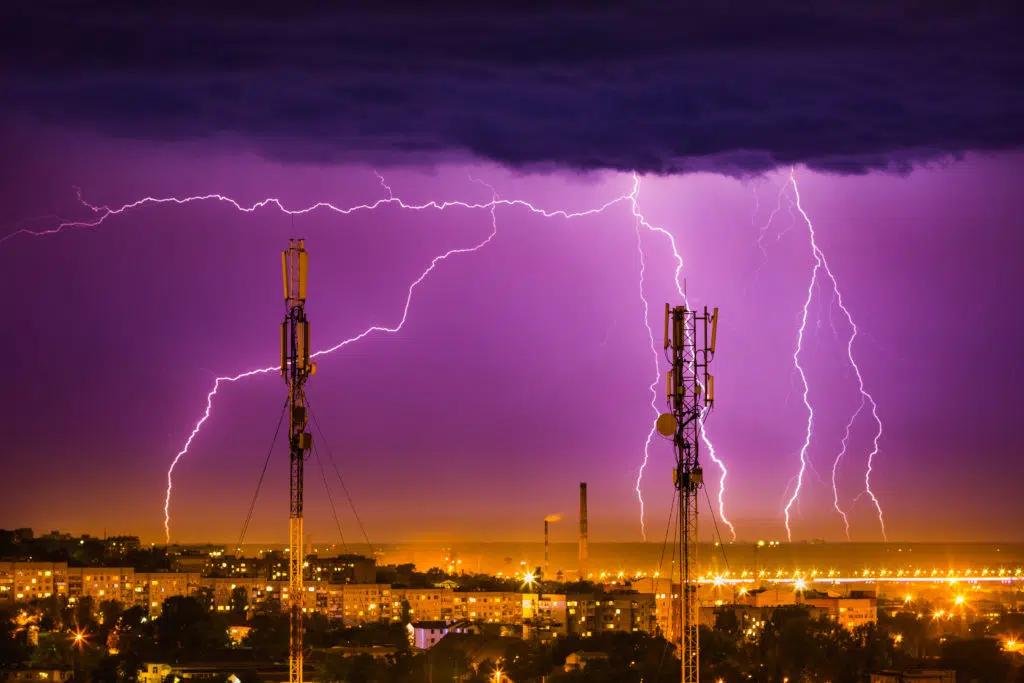
There’s a good chance that you have never lost an electronic device to a lightning strike.
Most people never do.
But you still have concerns, and that’s reasonable.
What this all comes down to is that modern buildings have a lot of safety features built into them.
Because of those safety features, it’s not easy for lightning to find its way to your cell phone.
These are the most important ways your phone is protected, no matter how severe the storm is.
#1 Grounding
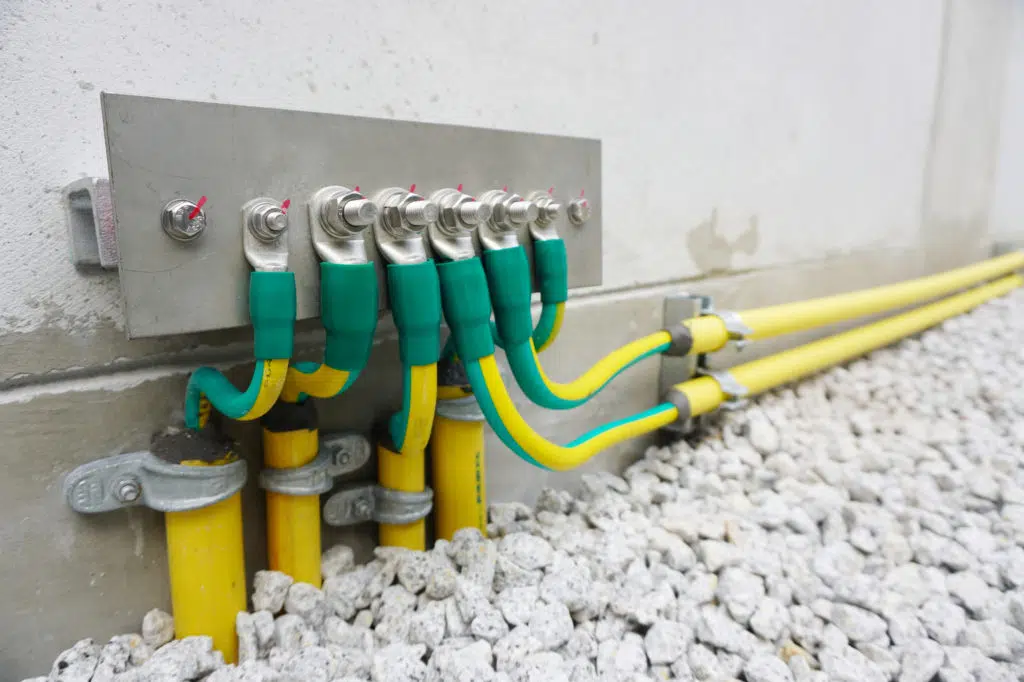
The most important thing protecting your phone from lighting is grounding.
All modern buildings have to be constructed according to building codes.
While those codes vary from city to city, they have a few things in common.
One of those things is grounding.
Grounding is a principle of connecting every wire in the house to a ground wire that ultimately allows electricity to run to the ground.
This is extremely important.
If a circuit ever has too much energy flowing through it, the excess can run through the ground wire.
The ground wire connects to the earth itself, which can handle all of the excess electricity in the world, literally.
When lightning strikes a home (or, more likely the power cables right next to a home), all of the electricity should be able to run through the ground wire without harming anything inside of the house.
#2 Breakers
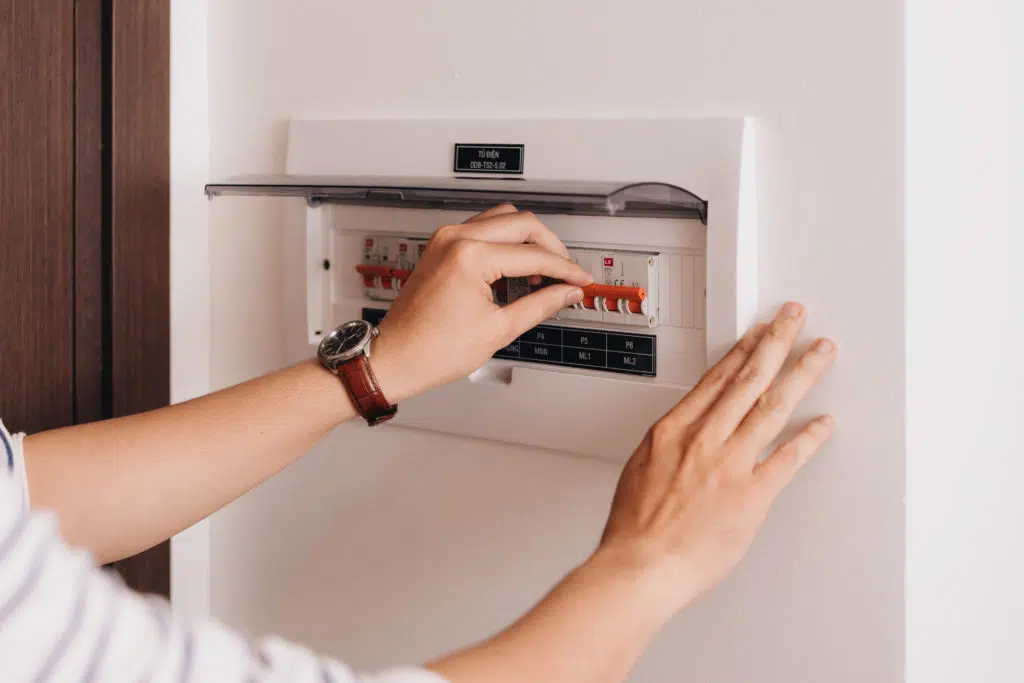
Breakers are also important.
They are really designed to prevent man-made objects from creating fire risks, but they also help with lightning safety.
Here’s how breakers work.
If a circuit ever has too much energy in it, it creates an electromotive force.
That force is enough to push a switch in your breaker box to the other side.
When that happens, it literally moves the electrical connection, creating a break in the circuit.
The newfound gap in the wires, so to speak, is big enough that no electricity can flow through the circuit.
This is why things go dark when a breaker trips.
If a lightning surge is running through your house, it should be powerful enough to trip the breakers.
That will instantly stop all flow of electricity, and it protects your plugged-in devices from being fried.
#3 Surge Protectors
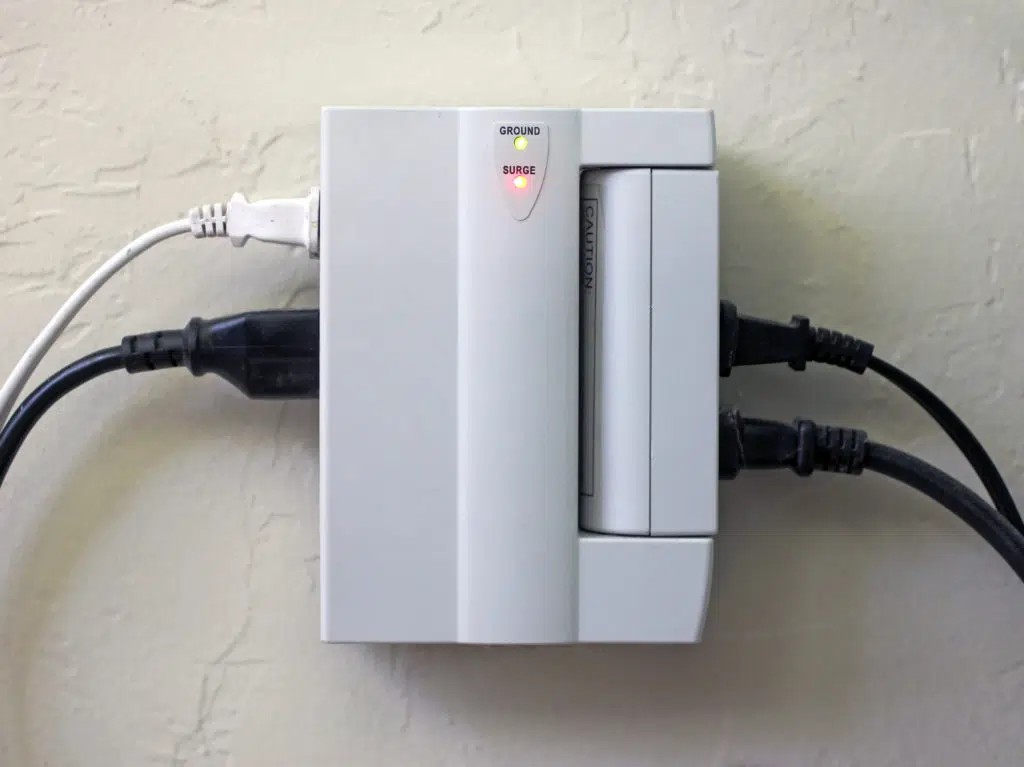
Surge protectors work on the exact same principle as breakers.
If there is too much electrical force, a breaker trips on the surge protector, and electricity can no longer flow.
Anything plugged into the surge protector is protected.
There is one thing to keep in mind with surge protectors.
Not all power strips have this feature.
Always check the labeling to be sure that your power strip really does have a circuit breakpoint that protects from surges.
The best products will offer warranties in case your devices are damaged from a surge while plugged in.
Why Is Lightning Still a Danger to Your Phone? (2 Reasons)
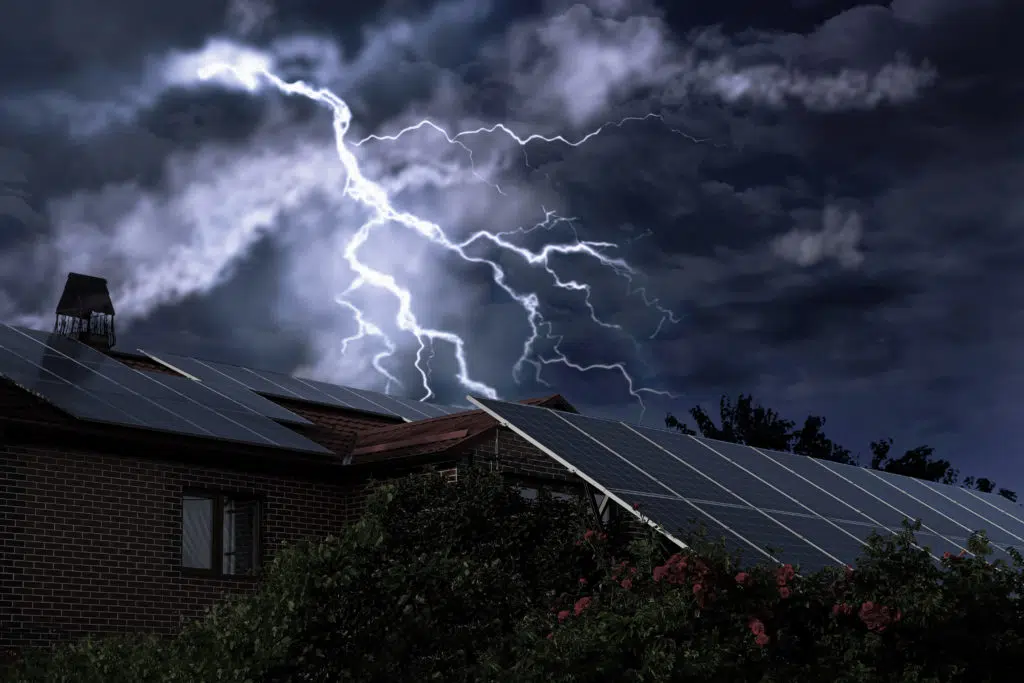
It’s important to remember that these safety features are super effective.
You are incredibly unlikely to suffer any harm from lightning while you are in your house.
Despite that, you very well may have heard stories of people’s devices being fried in a bad storm.
There are two reasons for that.
The first is that a lot of older buildings are not on the same building code as modern construction.
Those buildings just aren’t protected as well.
The second reason is that lightning is the very definition of a force of nature.
Sometimes, it overcomes safety features, and there are two reasons why.
#1 Raw Power
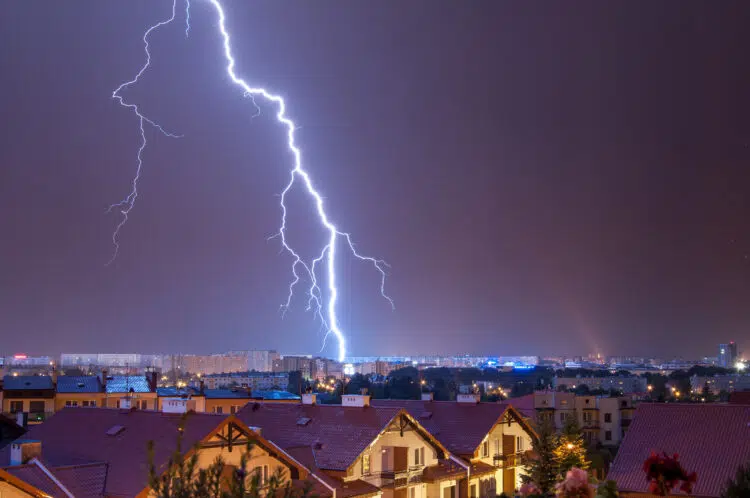
Grounding and broken circuits can handle a lot of situations.
Theoretically, there is no amount of electricity that should be able to overcome them, but that doesn’t always hold true.
The issue with lightning (among others) is that it puts a ton of current into a system in a very short amount of time.
This requires unbelievable amounts of electrical force, and that much force can cause circuits to kind of work backward.
A direct lightning strike can cause current to flow in the wrong direction in a circuit.
Because of this, the lighting might take a long way to get to the ground, in which case it could fry every plugged-in device in the house along the way.
The electricity won’t leave the wires and the circuits, but the sheer force of lighting can kill your phone even when it should be protected.
It’s a similar problem with circuit breaks.
Sometimes, the gaps just aren’t big enough, and there’s enough force behind the lighting to cause the electricity to jump from one wire to another.
This is called arcing, and when it happens, you can actually see the electricity do it.
In fact, when you see lightning in the sky, it is arcing. It’s jumping across huge air gaps to try to get to the ground.
If lighting can arc from the sky down to your house, it might also be able to arc across the broken circuit too.
#2 Power Lines
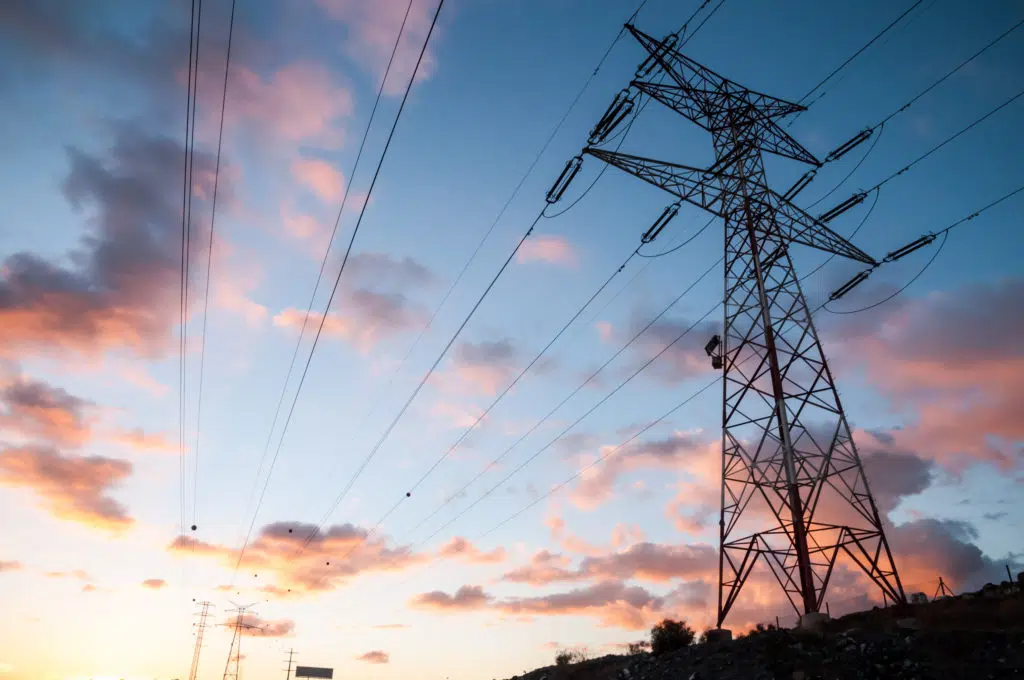
None of this would matter if not for power lines.
The chances that your house will receive a direct lightning strike are almost zero.
There are usually taller things around that attract the lighting. It’s a rare occurrence.
Power lines are another matter.
Power lines are grounded and can handle absolutely monstrous amounts of current.
That makes them very attractive for lighting, and it’s why power lines are frequently hit by direct lighting.
The problem is that power lines can be overwhelmed by the sheer force of lighting just like the circuits in your house.
The lightning can ride the power lines directly into your house and cause all of these problems.
What Is the Best Way to Use a Cell Phone in a Lightning Storm? (3 Tips)
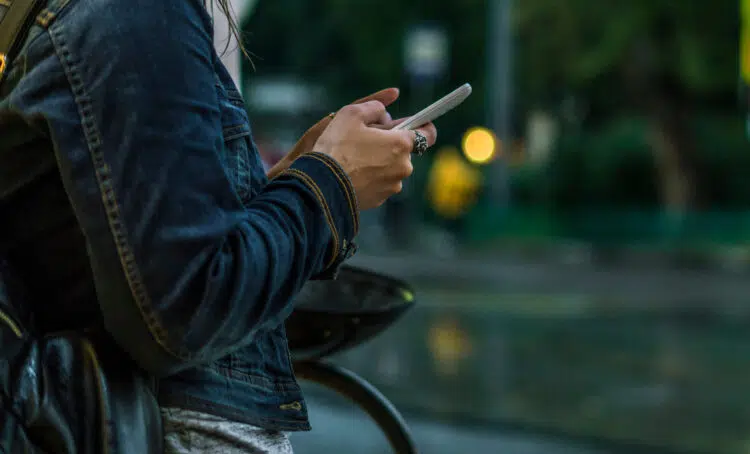
Here’s the bottom line.
Lightning is unlikely to cause problems in your home, but if you want to be as safe as possible, there are some best practices.
Basically, always assume that lightning could strike the building directly.
If you think along those lines, then your behavior is probably going to be safer, especially for your phone.
#1 Unplug It
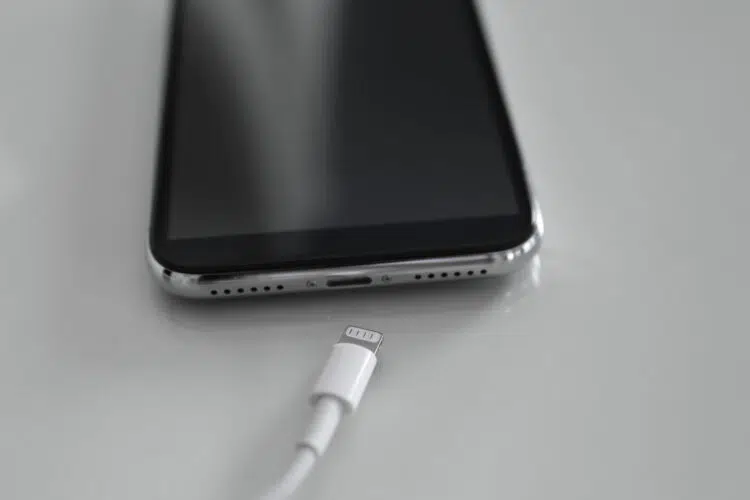
Here’s the number one rule.
Unplug your phone.
Don’t turn it off.
Unplug it.
Even if it’s off, if it is plugged into the wall, a direct strike can fry the phone.
If the phone is unplugged, it is perfectly safe from lighting (assuming you’re inside).
Some people believe that electrical devices attract lighting.
This isn’t quite right.
Lighting is looking to get to the ground while expending the least amount of effort possible.
Electrical wires provide an easy path, which is why grounding is so important.
But, if your cell phone isn’t plugged into anything, it isn’t offering a path for the lightning to get to the ground.
So, it won’t attract lightning at all.
In fact, an unplugged cell phone is safer to use in a lighting storm than a landline because of this.
#2 Use Unplugged Charging Sources
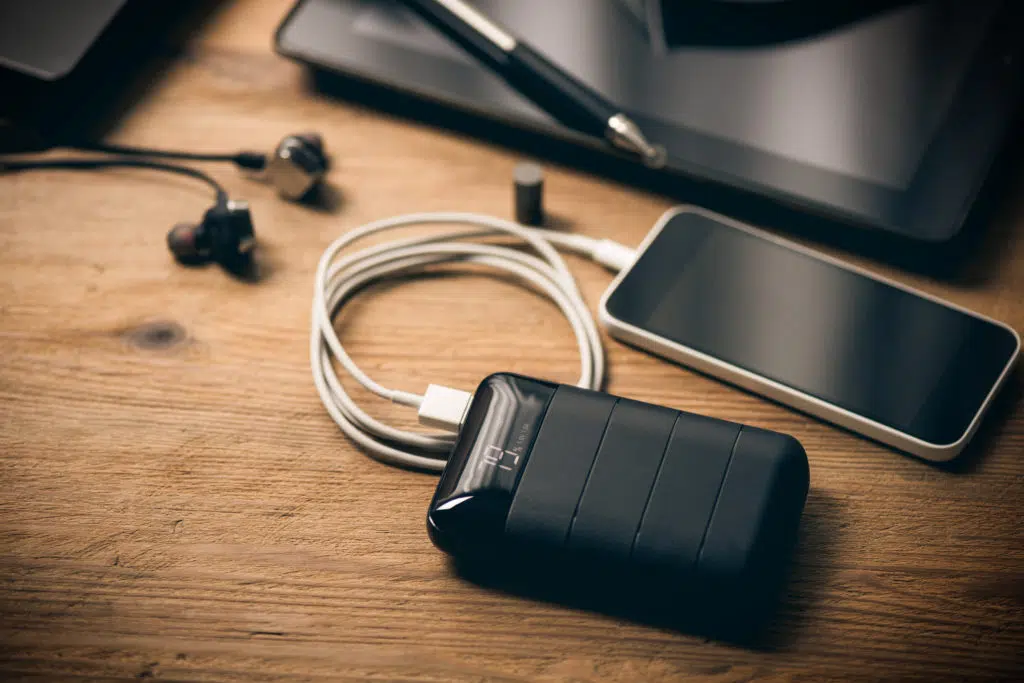
Still, your phone needs juice to run.
If you have a low battery, it can be a problem.
It’s especially a problem if you lose power or if the storm is strong enough to elicit public warnings and messages.
You can try to charge your phone using power sources that don’t connect to the wall.
If you have a power bank, it’s a great option during the storm.
In the absence of a power bank, you can charge your phone from a laptop.
Keep in mind that the laptop should not be plugged into the wall.
You’re just stealing juice from the laptop’s battery, and you definitely shouldn’t charge the phone off of a desktop computer.
Any unplugged source will do.
There are emergency charging devices that have batteries and even hand-powered cranks that can recharge your battery without putting it at risk.
#3 Charge the Battery Before the Storm Comes In
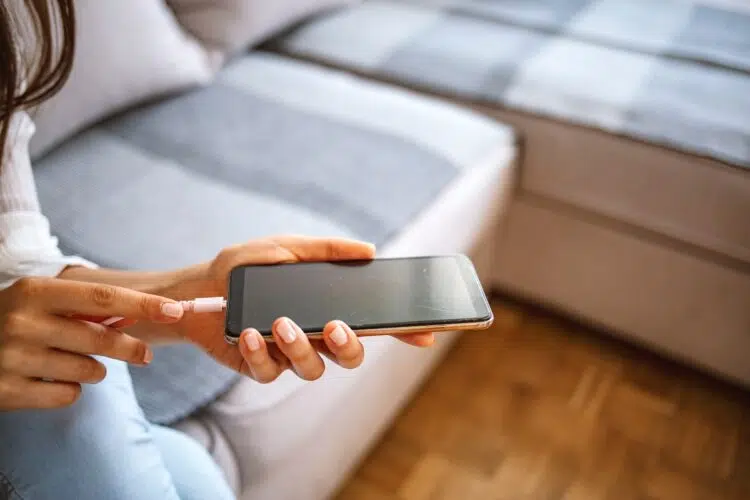
You can also charge your phone before a storm comes in, assuming there was a forecast.
This is usually a good idea.
If you’re expecting inclement weather, try to keep your phone battery topped off.
It’s one of your most valuable resources during a major storm, and as long as the towers are not damaged or unpowered by the storm, your phone will remain fully functional.
Does Frequent Charging Damage Your Phone Battery?
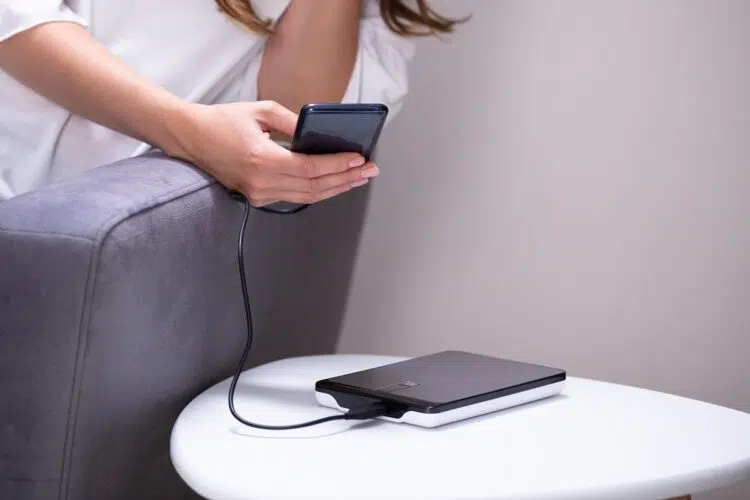
Ever wondered if it’s okay to charge your phone over and over again?
Are there any best practices to consider so your phone battery lasts the longest possible?
For the most part, frequent charging is not an issue for modern phones with lithium-based batteries.
Charging behavior does impact your battery’s lifespan, but the exact ways depend on how you use the phone and what kind of battery you have.
You can research best practices for your specific battery.
Learn all about how frequent charging affects your phone battery here.

